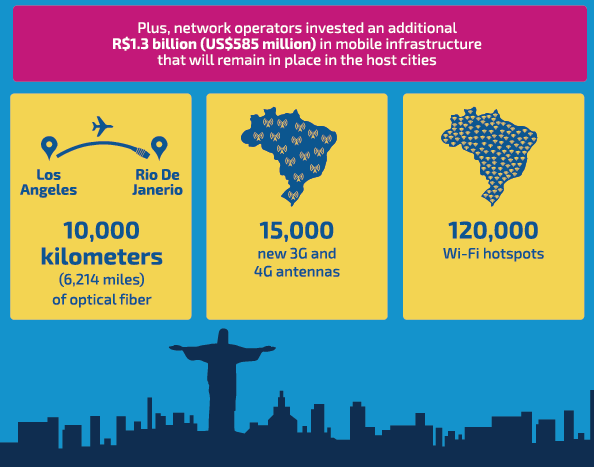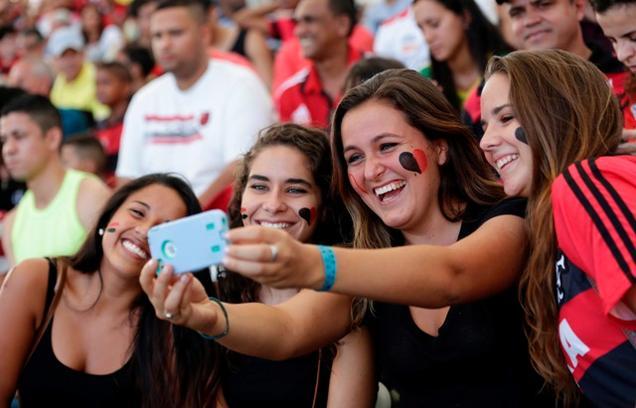Telecom operators — Claro, Nextel, Oi, TIM and Viva — have together invested $585 million in new mobile infrastructure and $102 million in stadiums to beef up their data handling capacity during FIFA 2014 World Cup in Brazil.
Specifically, these operators invested in 10,000 km of optic fiber, 15,000 3G and 4G antennas and 120,000 Wi-Fi hotspots to ensure better customer experience. The $585 million investment in their telecom infrastructure will remain in place in host cities post 2014 FIFA World Cup as well.
To ensure that fans at 12 stadiums, where 2014 FIFA World Cup matches were held during June-July this year, can send and receive data during and after the programs, telecoms invested in 164 km of optical fiber and 4,738 cellular and Wi-Fi antennas.
The result: nearly 35.6 million tweets were posted during the Brazil-Germany match alone — a record breaking number which beat out this year’s Super Bowl, said 4G Americas, a telecom industry body.
As per pre-estimates, FIFA 2014 was expected to create 1 million roaming connections and 300 percent increase in data traffic for 8 weeks as compared with normal traffic in Brazil.
What triggered infra Capex
FIFA 2010 South Africa generated 22 percent increase in video streaming and 32 percent increase in Youtube video. During FIFA 2010, mobile broadband usage enhanced to 2.5 billion from 800 million. The final was watched by 715 million people in 2010. Total views were 26 billion and out of this 24 billion were in-home viewers.
The FIFA 2014 World Cup was a different story for the fans. It generated significant social media interest. Brazilian telecom operators handled 1 million phone calls and 7 million image file – sent from stadiums – during the first 12 matches.
FIFA 2014 World goes social
Look at the social media interaction – especially on Facebook.
91 percent of mobile Internet was used for social media alone.
Facebook interactions during FIFA 2014 were 459 million against 185 million during Super Bowl 2014, 120 million during Olympics 2012 and 25 million during Oscars 2014.
Baburajan K
[email protected]







